
Maize Farming in Nigeria
February 10, 2023, 3:35 pm
Maize farming in Nigeria is one of the major types of farming because maize (Zea mays, L.) is one of the main cereal crops of West Africa.
Maize Farming in Nigeria
It is the fourth most consumed cereal during the past two decades, after sorghum, millet and rice in Nigeria. Maize is the world’s highest supplier of calorie with caloric supply of about 19.5%. It provides more calorie than rice (16.5%) and wheat (15.0%). It is one of the most important staple foods in the world today. Maize is also the most important staple food in Nigeria and it has grown to be local ‘cash crop’ most especially in the south-western part of Nigeria where at least 30% of the crop land has been devoted to small-scale maize production under various cropping systems.
Nigeria is the 11th largest producer of maize in the world, and the 2nd largest maize producer in Africa after South Africa. As a versatile crop that is not just consumed domestically, maize is used industrially by flour millers, brewers, bakers of bread and confectionery and animal feed manufacturers. Despite its high production volumes, maize farming in Nigeria yields an average of 1.8 MT/Ha which is one of the lowest among the top 10 maize producers in Africa. It lags behind countries such as Egypt and South Africa where the yields are 7.7MT/Ha and 5.3MT/Ha respectively making it difficult to totally meet the domestic and industrial maize demand.
Nigeria’s rising population is expected to reach 200 million by 2025. This growth will lead to rising demand for maize for both domestic and industrial consumption and this represents a golden opportunity for farmers and entrepreneurs to take advantage of.
USES OF MAIZE IN NIGERIA
Maize is a staple food for about 50% of Sub-Sahara African population. It is an important source of carbohydrate, protein, iron, vitamin B and minerals. As food, the whole grain, freshly green or dried, may be used or may be processed traditionally by wet and dry milling methods to give a variety of food products. Preparation and uses of maize alone or in combination with other food material as staple food or snacks in Nigeria include the followings: ogi (in hot and cold forms), tuwo, donkunnu, maasa, couscous, akple, gwate, nakia, egbo, abari, donkwa, ajepasi, aadun, kokoro, elekute etc.
The bulk of the concentrated feed to farm animals consist of grains, and maize is the most important and preferred one due to its low cost (compared to other cereals), low fiber content and high starch content which consist of concentrated energy food that gives highest conversion of dry substance to meat, milk and eggs. Maize stover, which is the plant residue after the ear has been removed (contains 30 to 40% of the plants total nitrogen, 75% of the potassium, sulphur and magnesium and almost all the calcium) is used by many farmers in developing countries as roughage feed for livestock.
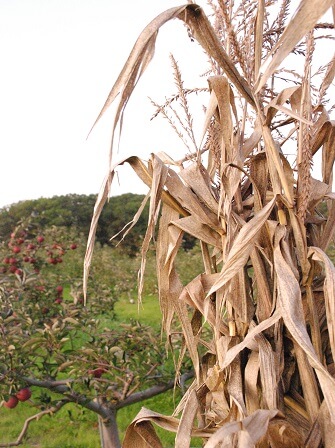
MAIZE FARMING IN NIGERIA
Increase in maize farming in Nigeria has been achieved greatly by expansion in area harvested rather than increase in yield. The area harvested increased from 2.8 million hectares in 1986 to over 3 million hectares in 2000 and over 6 million hectares by 2011. Of the total world production (1,133,540 M tons) in 2018, Nigeria, the largest producer in Sub-Sahara Africa produced 11 million tons representing 0.009% of the world production. Based on production potentials, Nigeria has been divided into four groups namely low, medium, medium to high and high maize production potential.
The average yield of maize farming in Nigeria as in other Sub-Sahara Africa countries is generally low 1.68 tons/hectare, which is very low compared to average yield in United States 9.3 tons/hectare over the same period.
MAIZE FARMING IN NIGERIA CONSTRAINTS
In view of the importance of maize farming in Nigeria, efforts are continuously made to increase maize farming yield per unit area of land and to extend areas where it can be grown, especially the cultivation of dry areas as improved through irrigation. Traditionally, maize has been mostly grown in forest ecology in Nigeria but large scale maize farming in Nigeria has moved to the savanna zone, especially the Northern Guinea savanna, where yield potential is much higher than in the forest. The environmental conditions required for maize farming in Nigeria are therefore, superior in the savanna zone with high solar radiation, less incidence of biotic stresses and natural dryness at time of harvest
However, in spite of all efforts, maize farming in Nigeria yields, like in many other Sub-Saharan countries, is still very low compared to developed countries due to many constraints, which may be biotic, abiotic agronomic or others like low soil fertility, pests and diseases, drought, unavailability of improved germplasm, weeds, un-remunerative prices, uncertain access to markets etc.
Farming Maize Successfully in Nigeria
The steps to take for successful maize farming in Nigeria are as follows:
Choice of Land
The land to be used for maize farming in Nigeria should be well drained sandy loam or loamy soil. These two types of soil are ideal for planting maize.
Land Preparation
Before planting maize, the land must be prepared to receive the maize. This preparation can be done using any method (Mechanical, Chemical and Manual) that can adequately remove weeds and keep the soil loose for good seedbed. As much as possible, incorporate residue of the previous crop into the soil. For large scale planting, clearing method should ensure preservation of the topsoil when uprooting and clearing trees mechanically. Plant immediately after land preparation to allow maize to get ahead of weeds. When the land is ploughed mechanically, the depth of planting should not be more than 5 cm (2 inches).
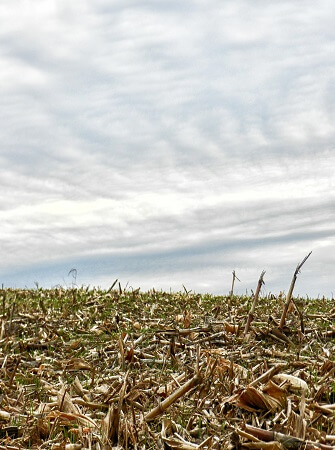
Time of Planting
The two seasons or periods for successful maize farming in Nigeria are:
Early Season
(i) In the Forest zone, the optimum planting date is between 15 March and 1 April, although planting could be done as soon as rainfall becomes steady.
(ii) In the Derived Savannah zone, plant as soon as the rainfall becomes steady, between 1-30 April.
(iii) In the Southern Guinea Savannah zone, planting could still be done as late as May and June, depending on rainfall.
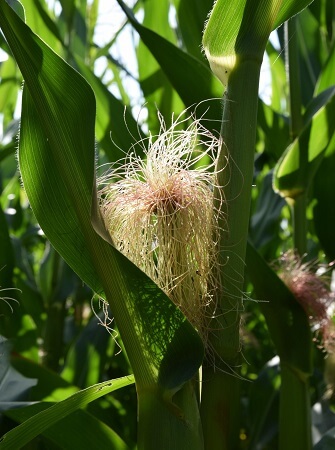
Late Season
Late season maize farming in Nigeria is recommended only for areas where rainfall is likely to be adequate. Popcorn is best planted in the late season where proper drying could be easily effected for optimum popping expansion. Planting should be done preferably between 1–15 August.
Recommended Maize Farming Varieties
Early Season
The following varieties of maize can be planted in the early season:
YELLOW OPEN-POLLINATED VARIETIES
Western Yellow 1: TZSR-Y-1 (Streak Resistant)
DMR-LSRY (Downy Mildew & Streak Resistant)
YELLOW HYBRID VARIETIES: 8425-8; 8329-15
WHITE, OPEN-POLLINATED VARIETIES: TZPB (FARZ 27); TZB (FARZ 34); TZSR-W-1; ZPBSR (Streak Resistant); DMR-LSRW (Downy Mildew & Streak Resistant).
DMR-LSRW (Downy Mildew & Streak Resistant).
WHITE HYBRIDS
8321-18; 9022-19; (Striga Resistant).
Late Season
For this season of maize farming in Nigeria, plant early maturing, streak and/or downy mildew resistant varieties such as:
YELLOW OPEN-POLLINATED VARIETIES: TZESR-Y; DMR-ESRY (Downy Mildew and Streak Resistant).
WHITE-OPEN POLLINATED VARIETIES: TZESR-W; DMR-ESRW (Downy Mildew and Streak Resistant)
POPCORN: White Pop: Yellow composite

Maize Farming Seed Rate and Plant Population
Seed Rate
Follow the guideline below for the type of maize to be planted on your farm:
(i) 25 kg/hectare for open pollinated varieties
(ii) 15 kg/ hectare for Hybrids
(iii) 15 kg/ hectare for popcorn.
Maize Farming Plant Population
After you have planted your maize, these are the expected plant population to be expected per maize variety and planting methods:
(i) Open-Pollinated/Popcorn varieties: Hand planted, 90 cm x 40 cm, 2 plants/stand is expected to give 55,555 plants/ hectare.
(ii) Hybrids: Hand planted, 90 cm x 40 cm, 2 plants/stand is expected to give 55,555 plant/ hectare.
(iii) Mechanical Planting: (Any Variety) 75 cm x 25 cm, 1 plant/stand to given 53,555 plants/ hectare or 90 cm x 20 cm, 1plant/stand giving 55,555 plants/ hectare. There should be no thinning or supplying except in very bad cases.
Always use certified seeds of recommended varieties for good crop establishment.
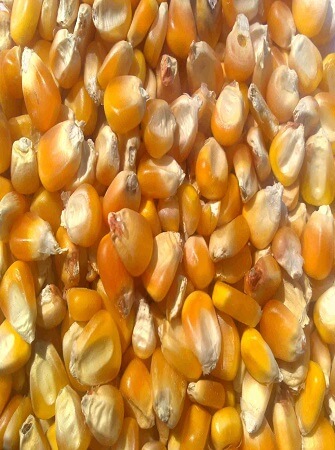
Pests and diseases of maize farming
Maize farming in Nigeria is attacked by an array of diseases that can cause significant damages. These include the downey mildew, rust, leaf blight, stalk and ear rots, leaf spots and maize streak virus. However, Striga is one of the most dangerous weeds in maize production especially in savanna area of Nigeria.
Yield losses from Striga range from 10 to 100% depending on time of parasite infection Studies on time and rate of application of nitrogen were carried out at Mokwa, Southern Guinea savanna zone of Nigeria using four hybrid cultivars. Timing and nitrogen application rates significantly affected Striga emergence, host plant damage scores, agronomic traits and grain yield. Nitrogen application at two weeks after planting (WAP) (compared with 0, 4 and 6 WAP) at 60kg/ha gave the best result in terms of maize performance and reduction of Striga emergence.
The tolerant cultivar produced 188% higher grain yield than susceptible cultivars across all treatments. Grain yield of tolerant cultivar at 60kgN/ha was 88% higher than that of susceptible cultivar at 120kgN/ha. In a similar study, Striga infestation reduced grain yield of two susceptible hybrids by 49% and of two tolerant hybrids by 24%. The two tolerant hybrids produced on average 87% higher grain yield than the two susceptible hybrids under low N rates (0-60 kg/ha) and 51% higher yields under high N (90-150 kg/ha).
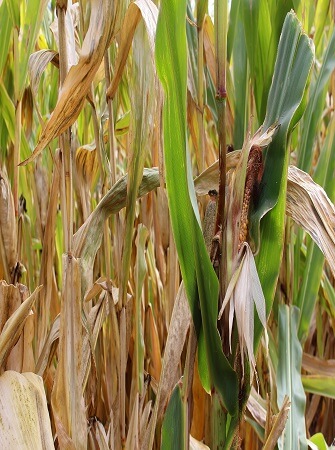
Efforts are continuously made to reduce or control these diseases; however, these efforts are complicated by several factors that are making it difficult to achieve an impact in a relatively short time, due to the following reasons:
i. Important diseases change with time
ii. Some diseases are specific to particular ecologies, whereas others are present in all ecologies
iii. Difficulty in infecting maize with some of the diseases for effective screening of the germ plasm for resistance for example downey mildew.
iv. Difficulty of artificially inoculating maize plants to screen for resistance; therefore, plant breeders could not study the genetics of resistance of some of the diseases.
The most debilitating pests in maize farming in Nigeria include stem borers, termites, storage insects, beetle and host of others. Various species of stem borer rank as the most devastating, causing maize pest loss of 20 - 40% during cultivation and 30 - 90% post-harvest storage. As a result of significant yield loss due to pest and diseases, extensive research has been done along this area. Many national maize programs with the aim of developing maize resistant varieties to prevailing diseases in different agro ecological zones of the country had been organized. On account of these national programs, germ plasms both of pollinated and hybrids resistant to prevailing diseases have been developed.
Several agronomic practices have also been investigated to minimize the effect of many of these pests and diseases. Although many insects, pests and diseases can be controlled with chemicals, these chemicals, often times, are not available, are dangerous and often expensive for small-holders who lack access to credit facilities.
Moreover, chemicals are increasingly viewed as environmentally hazardous, threat to human life and safety, such that their use are been discouraged by many policy makers for their negative impact on sustainable agriculture. A variety of chemical and cultural practices can help control many of the diseases; however, using resistant germ plasms, which is the least harmful to the environment, is the most effective method for controlling them. To reduce the economic losses from maize pests, farmers are advised to take out crop insurance for their maize farms.
Low Soil Fertility and Maize Farming
Low soil fertility ranks among the most serious constraints of maize farming in Nigeria which are brought mainly by reduction in the fallow period because of ever increasing population pressures. Nigeria as in many other tropical climates is characterized by high rainfall and insolation, the attendant problem of nutrient leaching and low level of soil organic matter which has made nitrogen the most nutrient limiting maize farming in Nigeria.
Increase of fertility level has played a key role in the increase of maize farming yields and the dominant plant nutrient causing this increase has been nitrogen. One important characteristic of maize is its high nutrient requirement especially N, P and K. On the average, maize grain contains up to 2% N and 2.6% for all above ground parts. 20 kg of nitrogen is removed from the soil for every ton of maize grain harvested.
Farmers understand the importance of nitrogen in maize farming in Nigeria and employ different strategies to minimize the adverse effects of low soil fertility such as using low population density, applying mineral fertilizer or animal manure, leaving the land fallow and switching to less demanding crops.
However, even with all these efforts farmers are not able to supply adequate quantity of fertilizer and most often do not apply fertilizer mostly due to high cost or unavailability. Therefore, maize yield is generally low.
Fertilizer Requirements of Maize Farming
Increase in fertility level has played a key role in the increase of maize yields in Nigeria, and the dominant plant nutrient responsible for this increase has been nitrogen, which is a major nutrient needed in large quantity for high yields in maize production. Many field experiments have shown responses in grain yield of maize to application of nitrogen fertilizer. But the magnitude of response to applied nitrogen varies across experiments due to confounding influences of soil nitrogen supply from non-fertilizer sources, weather variation, variety and cropping practices. Consequently, recommendations of nitrogen management are site and season specific.
Nitrogen is a component of protein and nucleic acids but when it is sub-optimal, growth is reduced. Nitrogen is also a characteristic constituent element of protein and also integral components of many other compounds essential for plant growth processes including chlorophyll and many enzymatic processes. Nitrogen plays a significant role in protein synthesis and thus strongly influences grain production and grain protein content. Its supply also affects both leaf area development and leaf senescence, and consequently crop radiation interception. Meanwhile, photosynthetic activity of the leaf canopy, and thus radiation use efficiency, varies with leaf nitrogen (expressed as the amount of nitrogen per unit leaf area).
During reproductive development, nitrogen is mobilized from the leaves and stem to the grain with consequent reduction on leaf photosynthetic capacity and the consequences for grain yield depend on the relative contribution of crop nitrogen uptake and mobilization of leaf nitrogen to grains as moderated by the grain concentration. Common nitrogen recommendation for old NS series in Nigeria is 75 kgN/ha. Some researchers recommended 150 kgN/ha for FARZ series based on profitability, although the yield of maize at 75 kgN/ha was not significantly different from the yield at 150 kgN/ha, while other researchers reported responses up to 70, 140 and 210 kg N/ha for maize grown in Ikenne, Mokwa and Kaduna respectively, using different maize genotypes.
With regard to dry matter distribution in maize as influenced by nitrogen, studies on nitrogen levels at Ilora, South-western Nigeria using three genotypes of maize (open pollinated, single cross and double cross hybrids) indicated that at final harvest, among all genotypes and fertilizer levels, the least dry matter was partitioned to tassels while the highest was found in stem and grains. The proportion of dry matter partitioned to grains is 27% for single and double cross and 25% for open pollinated while the proportion partitioned to grain was similar (30%) for 75,100, 150 and 200 kgN/ha.
Weed infestation and maize farming
Maize require minimum weed invasion to exhibit its yield potential. Heavy weed interference results in competition for essential resources and, consequently, yields loss. Weeds seriously limit maize productivity in farms in Nigeria. Indeed, it is estimated that weed control takes 50 to 60% of the total cost of maize production. Weeding takes between 21 to 32% of the total time devoted to maize production in Nigeria. Maize farming in Nigeria is susceptible to competitions from many annual weeds in the first six to eight weeks after planting and the extent of weed infestation varies from one ecology to the other. It has been reported that weeding during a critical period of 10 to 30 days after crop emergence greatly enhances grain production, while uncontrolled weed growth during this period could reduce maize yield by 40 to 60%.
One of the most dangerous weeds in maize farming is Striga, which is also known as witch weed. It is indigenous parasitic weeds that attack maize crop, especially in the savanna areas of Nigeria. Striga is becoming a detrimental pest of maize as a result of the intensification and expansion of maize in the savanna, where Striga is endemic.
Apart from savanna region, the weed has been reported in other parts of Nigeria, including the derived savanna of southern Nigeria. The species observed in the southern part of Nigeria are Striga asiatica, Striga aspera, Striga gesnerioides and Striga forbesii. However, Striga hermonthica which is prevalent in the Northern part of Nigeria is the most damaging and widespread among Striga species.
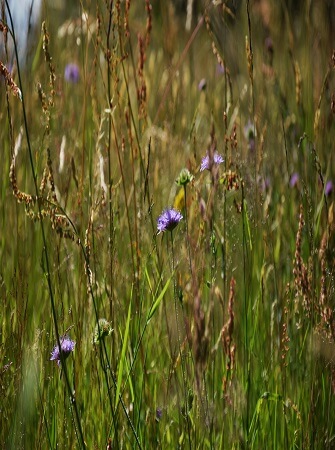
Yield losses from Striga range from 10 – 100% depending on time of parasite infection. Although major technologies exist to control Striga weeds but since most of the effective control practices require expensive inputs or special equipment, they are not suitable for small scale farmers who constitute the large family population in Nigeria. However, it has been recommended that the most practical approach of controlling Striga species is the use of cultivars that are resistant to or tolerant to the weed infestation.
Weeding requirements of maize farming
Weed control in most agricultural system in Nigeria involves the use of hoes and cutlasses which are quite tedious, time consuming and often ineffective. Recommendation is usually hand weeding 14 to 21 days, and 57 days after planting, while third weeding may be necessary, depending on the varieties and severity of weeds. Weed may also be controlled by various other methods, including tillage practices, planting of weed - free seeds, cultivation using animal or mechanical power, cultural methods such as the use of cover crops, planting immediately after land clearing and use of herbicides.
Maize farming in Nigeria is affected by many weed species but weeds such as Cyperus rotundus, Rottboellia Cochinchinensis and Imperata cylindrical are quite problematic because they are very competitive and difficult to control when routine crop husbandry practices are employed. Others such as Euphorbia heterophylla occur in large number (high density) and grow as rapidly relative to crop that the young maize are shaded out. Other weeds common in maize plots included Talinum triangulare, Amaranthus spinosus, Chromolaena odorata, Agerantum conyzoides.
Weeding takes between 21 to 32% of the total time devoted to maize farming in Nigeria. Moreover, different herbicides are recommended and for maize and maize based crop mixtures, however unavailability, cost and knowledge of handling and environmental effects are drawbacks to its use.
Drought and maize farming
Maize grown in Nigeria and many other countries in Sub- Sahara Africa are usually rain-fed. Rainfall, and to a lesser extent, temperature are the most important climatic factors that determine crops’ growth and timing of agronomic practices in different ecological zones of Nigeria.
Although, agricultural drought occurs when the levels of precipitation are sufficiently low to cause serious decrease in crop yield through its effects on the physiological process whereas, maize is essentially sensitive to moisture stress around the time of tasselling and cob formation. It also needs optimum moisture condition at the time of planting. Drought may occur at any stage of maize growth but when it coincides with flowering and grain filling periods yield loss could be between 40 to 90%.
Drought stress at flowering disrupts the synchrony between pollen shed and silking, which is the major cause of yield reduction. In spite of great potential of Nigeria in maize production, frequent occurrence of drought occasioned by erratic rainfall distribution and/or cessation of rain during the growing season is the greatest hindrance to increased production, and this is more serious in the northern parts of Nigeria. In order to reduce yield loss due to drought, drought resistant varieties are being developed and the Nigerian Meteorological Agency (NIMET) are taking responsibilities for weather forecast into periods of planting for different cropping zones.
Expected Maize Farming Yield
If the all the above recommendations are followed and rainfall is adequate, a yield range of 2,000–3000 kg/ hectare for open pollinated, 2,000–2,500 kg/ hectare for popcorn and 3,000–4,000 kg/ hectare for hybrid could be obtained in the Southern Nigerian zone. In the Nigerian Savannah zone, 3–4 tonnes/ha for Open Pollinated and 5–6 tonnes/ hectare for Hybrid 4.
You must also have good storage in place to prevent aflatoxin from damaging your harvest and a good crop insurance to protect your losses.
If you are interested in starting a maize farming business and you need a business plan that will show you all the costs, expenses, profitability and cash flow projections for 5 years of operations of farming and processing maize, you can get our maize farming business plan for N150,000.
To learn how to make your offline payment for our maize farming business plan, send a mail to agsolutions@agricdemy.com
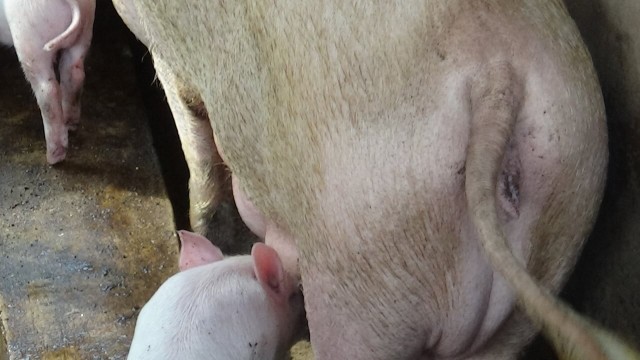
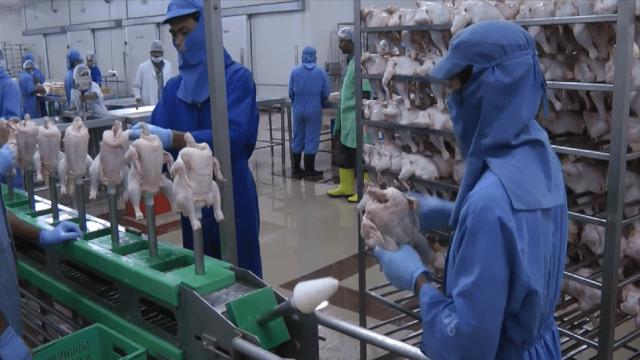

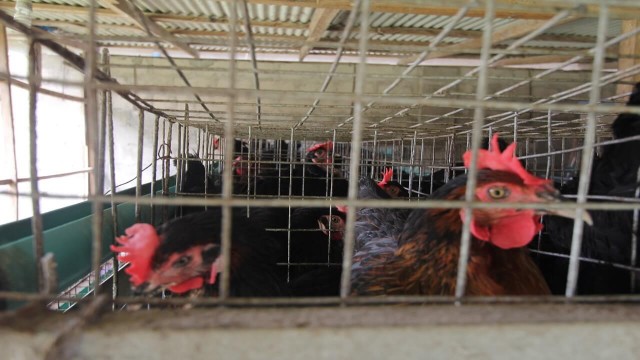

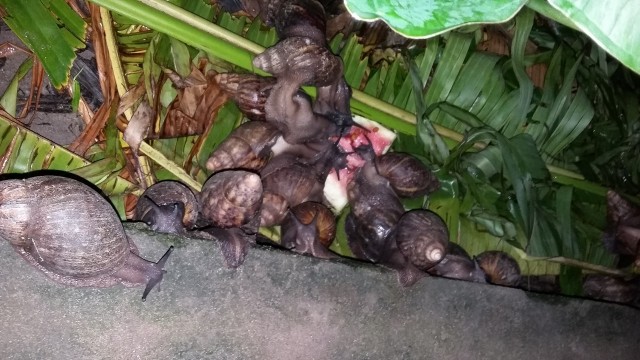
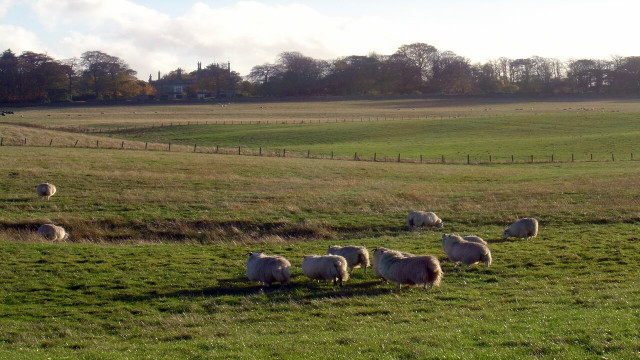
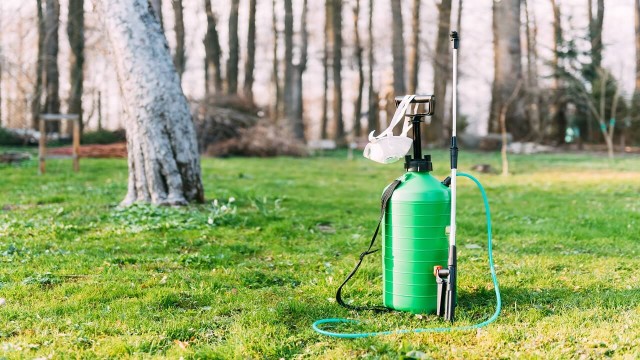


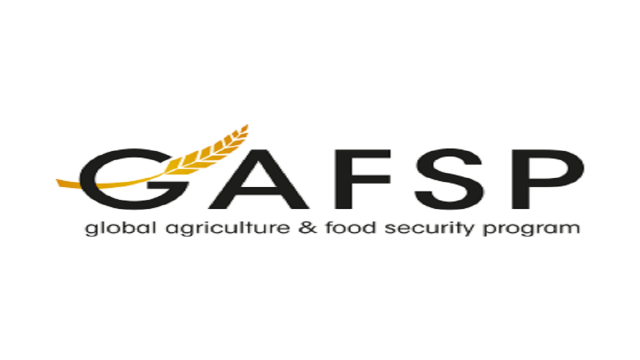

Share This Article: